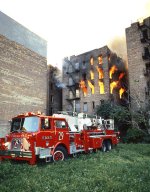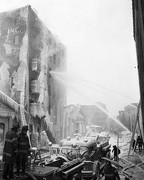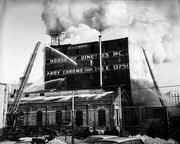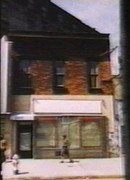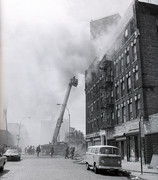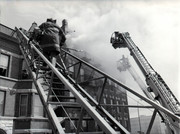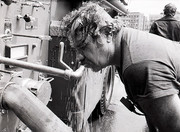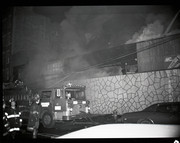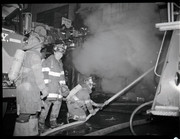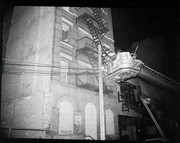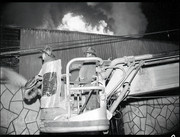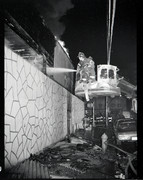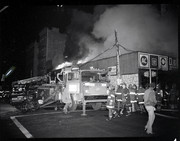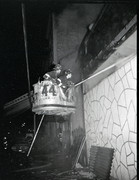You are using an out of date browser. It may not display this or other websites correctly.
You should upgrade or use an alternative browser.
You should upgrade or use an alternative browser.
FDNY and NYC Firehouses and Fire Companies - 2nd Section
- Thread starter mack
- Start date
scoobyd said:
Great "War Years" picture.
- Joined
- Mar 8, 2007
- Messages
- 5,392
That firehouse was one of my favorites to visit back around 1960-64 because they kept three pumpers there. E83's pumper was a 1959 Mack C-95 1000gpm (#1024), their hosewagon was a 1947 American LaFrance (#9025 ex-E220) 750gpm "bathtub" that we kids used to sit in, and a 1954 Ward LaFrance Civil Defense pumper C.D. 46 that was used as a 2nd pc. wagon more often than the '47 ALF. In 1963, they got a 1954 Mack L 1000gpm (#1099 ex-E10) that would be there until 1965 when Satellite 2 came along. Two years later, from 1967-69, I would get to see that '54 Mack almost every day when I worked at a Camera store next to Engine 65 on W. 43rd St. BTW, Ladder 29's 1960 American LaFrance was the first 100ft. aerial assigned to the Bronx. The next Bronx 100ft. aerials in came in 1962 with L19 & L27 getting 1962 Seagraves and L31 & L41 getting 1962 ALF's.
- Joined
- Mar 8, 2007
- Messages
- 5,392
Not sure of when This happened thinking late 80?s early 90?s but TL29 switched rigs with L50 who had a rearmount. Maybe other members can be more specific as to reasons, also remember that TL50 had received a 95? tower and swapped that rig with TL51 due to turning radius out of quarters being tight so they became a 75? tower again.
- Joined
- Mar 8, 2007
- Messages
- 5,392
There was an issue regarding tower ladder responses onto bridge from Randalls to Wards Island.mac8146 said:Not sure of when This happened thinking late 80?s early 90?s but TL29 switched rigs with L50 who had a rearmount. Maybe other members can be more specific as to reasons, also remember that TL50 had received a 95? tower and swapped that rig with TL51 due to turning radius out of quarters being tight so they became a 75? tower again.
- Joined
- May 6, 2010
- Messages
- 17,451
I remember LAD*29 before TL's were in fashion & Charlie Bohan was the Chauf of 29 when we 108 while interchanged with 106 (by request) Relocated to 29.scoobyd said:Extremely disappointed in some of the buffs here. L 29 was TL 29 for a time. No one noticed!
Also noteworthy, the late FF Eli Giaquinto, a L 29 medal winner, went on to start a major fire escape servicing company in San Francisco.
I too had also heard it was the weight of the Tower Ladder (TL 29) being the reason for the change to a rear mount. A friend and member here, BFD151, had been an auxiliary firefighter with 83/29/14 back in the early 70s before the FDNY closed about 50 companies and laid off about 300 firefighters.
With those lay offs, it was the first time that anybody had heard of such an event. Even during the Great Depression of the 1930s, no firefighters were ever laid off. Job security was given to firefighters for the protection of it's citizens. And this happened during the busiest time in history for the FDNY.
How that city (NYC) didn't burn down with nothing left still amazes me. Of course the neighborhood of 83/29 certainly showed the scares of one such neighborhood that came pretty close.
With those lay offs, it was the first time that anybody had heard of such an event. Even during the Great Depression of the 1930s, no firefighters were ever laid off. Job security was given to firefighters for the protection of it's citizens. And this happened during the busiest time in history for the FDNY.
How that city (NYC) didn't burn down with nothing left still amazes me. Of course the neighborhood of 83/29 certainly showed the scares of one such neighborhood that came pretty close.
Wasn't the bridge that restricted Towers just beyond, and south of, the entrance to the Rock? At one time the roadway spanned Little Hell Gate a waterway that separated Randalls and Wards Islands. It was ultimately filled, but the remaining bridge may still not have allowed the weight. I think the bridge or its ramp was used in a roadblock scene toward the end of "The French Connection" or some similar cop movie.
scoobyd said:
This picture comes from the GREAT Collection of "Our Most Valuable Players" web site, www.fdnysbravest.com. Owned and operated by Mike D., aka "mikeindabronx". It is a Great picture of TL 29 about to go to work.
The picture is located on page 11 of that web site.
It was also mentioned, by "mac8146" earlier about the swapping of TL 50 with TL 51 due to the turning radius getting out of the firehouse for TL 50. I also seem to remember that as well.
Squad 41 Firehouse 330 E 150 Street Melrose, Bronx Special Operations Command "The Best of Both Worlds"
Engine 41 organized 2801 3rd Avenue former firehouse volunteer Jackson Engine 4 1874
Engine 41 new firehouse 330 E 150th Street 1904
Engine 41 disbanded 1989
Engine 41 reorganized as Enhanced Engine Company 330 E 150th Street 1990
Engine 41 became Squad 41 1998
Engine 41-2 organized 330 E 150th Street at Engine 41 1957
Engine 41-2 disbanded 1958
Engine 41-2 reorganized 330 E 150th Street at Engine 41 1968
Engine 41-2 disbanded 1974
Battalion 10 organized 2801 3rd Avenue at w/Engine 41 1874
Battalion 10 new firehouse 491 E 166 Street w/Ladder 18 1882
Squad 5 moved to 330 E 150th Street at Engine 41 1974
Squad 5 disbanded 1975
Squad 5 reorganized 330 E 150th Street at Engine 41 1975
Squad 5 disbanded 1976
Hazardous Material Technical Unit Bronx organized 330 E 150th Street at Squad 41 1998
Pre-FDNY:
The Morrisania Fire Department provided fire protection from 1856 to 1874 with 6 volunteer engine companies, 2 volunteer hose companies and 4 volunteer hook and ladder companies. Jackson Engine 4 was located at 2801 3rd Avenue. Engine 41 FDNY was organized in Jackson Engine 4's former firehouse.
1900 Bronx map: http://www.davidrumsey.com/luna/servlet/detail/RUMSEY~8~1~30317~1140838:Map-of-the-borough-of-the-Bronx---C
History of Engine 41/Squad 41:
Squad Company 41 was organized as an Engine Company on January 1, 1874. Their first firehouse, located at 2801 Third Avenue in the Bronx, was the former volunteer house of Jackson Engine Company 4. The history of Engine 41 is extensive and at one point, in 1989 the company was disbanded. On April 4, 1904, they moved into their current firehouse at 330 East 150 Street.
During the 1960?s through the 1970?s the South Bronx as well as other New York City neighborhoods were going through a conflagration. Working fires were being fought in record numbers and South Bronx fire companies were going to work in amazing proportions. In 1968, the busiest engine and ladder companies were assigned a second piece of apparatus to ?relieve? the work of the first piece.
During this time, Engine Company 41 received a second piece. This second section used the apparatus and manpower of disbanded Manhattan Engine Co. 72 (now a Bronx engine). This second section was used from 1957-1958 and again in 1968 to 1974. The company was designated as Engine Company 41-2. In 1974, the F.D.N.Y. was responding to 353,458 alarms. Working fires were at 130,324, with 52,473 structural fires. Engine Company 41?s second piece was disbanded and was reorganized to be Squad Company 5. Squad Company 5 was disbanded in 1976.
In 1981, the F.D.N.Y. began to experiment with a different color rig, lime-yellow and in 1982 Engine 41 received one of these pumpers.
On May 3, 1989, Engine Company 41 (now only one piece) was disbanded. Because the City needed to cut back on expenses, fire companies were then disbanded and Engine 41 was one of them. Engine 41 has played a vital role in the South Bronx as a fire fighting company. Due to a rise in fire fatalities in the area and protests by the residents of the area, Engine 41 was re-organized and placed back into service on July 1, 1990.
On July 1, 1990, a new chapter in the history of Engine Company 41 began. The company was reinstated but this time, Engine 41 would have a new responsibility. Engine 41 was designated Engine/ Squad 41 dubbed an ?enhanced engine company?. Engine/ Squad 41 would not only respond to they?re first, second, and third due alarm boxes, but would perform squad company work at working fires outside of those areas. They were now responding as a squad company to working fires in Bronx Battalions 3, 14, 16, 17, 18, 19, 26, and to Manhattan?s Battalions 12 and 13.
As a Squad Company, members are trained in both engine and truck work. Upon their arrival at a job, the incident commander would utilize them to his desire. The company rides with an officer and five firefighters. As an engine, the riding positions are: The engine company chauffeur (Motor Pump Operator), the Officer, Nozzle, Back-up, Door, and the Control position. The Squad Company the positions are as follows: chauffeur, Officer, Iirons, Hook, Saw, and Roof position. The Officer, Hook, and Irons are the inside team, and the Saw, Roof, and Chauffeur are the outside team.
Members of a squad company are not normally assigned. Like a Rescue Company, firefighters or officers wanting to be a member of a squad, would request an interview with the Squad Company Captain. Experience in a busy company as well as other trades e.g.: carpentry, iron or steel work, construction are very beneficial and would improve your chances of getting onto this specialized unit.
In 1998, The F.D.N.Y. made several changes. Due to the increased awareness in Hazardous Materials, six engine companies were designated as squad companies. Engines 18, 61, 252, 270, and 288 were designated squads. Squad Company 1 in Brooklyn remained Squad 1. The establishment of the squads on F.D.N.Y. Department Order 68 states 'The Squads are equipped with ladder company tools and are trained and equipped to operate as a ladder or engine company. They will continue to respond to their assigned first-alarm boxes.' Effective August 1, 1998, Squad members will be Haz-Mat Technician Units equipped with a second apparatus and equipment for responses to haz-mat incidents. On July 2, 1998 Engine/ Squad 41 was officially designated Squad Company 41. Also in 1998, Squad Company 41 received they?re new rig. They respond in a custom-built apparatus known as a rescue-pumper. The pumper has a 1000gpm capability with a 500 gallon booster tank.
With two Squad Companies now in The Bronx, Squad 41 has a new response area for working fires. Squad 41 would now respond to working fires in Bronx Battalions 3, 17, 19, 26, and in Manhattan above 90th Street on the East Side and 100th Street on the West Side covering Battalions 11, 12, 13, and 16. Squad 41 is located in Battalion 14?s district and responds to 1st, 2nd, and 3rd due boxes in these areas.
330 E 150th Street firehouse:
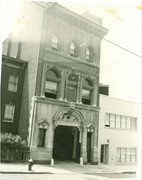
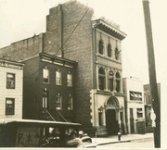
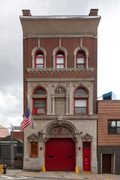
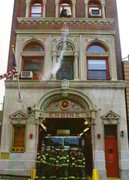

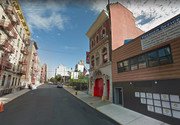

Engine 41:
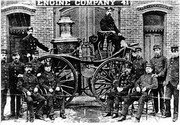
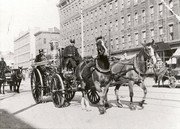


Squad 41:
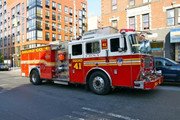
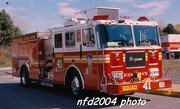
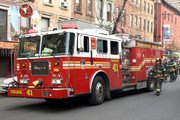
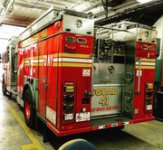
Squad 41 members:
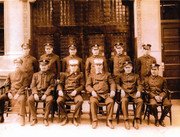

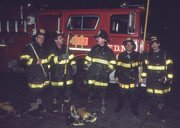
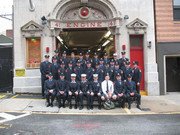
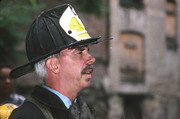
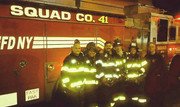
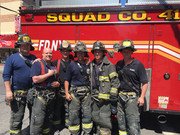
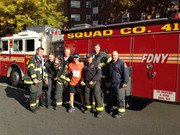
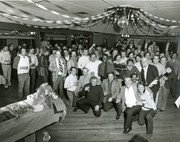
Squad 41 videos:
https://www.youtube.com/watch?v=5EHZODejN84
https://www.youtube.com/watch?v=2C32KR1TLuQ
https://www.youtube.com/watch?v=jK1YzgKlr5M
https://www.youtube.com/watch?v=IAja5uPmH-4
Engine 41 Runs & Workers 1954-1997:
Year Engine Runs Workers OSW
1954 41 1347
1961 41 1661
1969 41 5884
41-2 5477
1971 41 6808
41-2 6692
1975 41 5148 3819
1976 41 6257 4720
1977 41 6009 4995
1978 41 5259 4327
1979 41 3210 2204
1980 41 4142 3026
1981 41 3631 2485
1982 41 3225 2193
1983 41 2916 1983 302
1984 41 3258 2076
1985 41 3343 2217 250
1986 41 3260 2178 278
1987 41 3418 2180 282
1988 41 3456 2224 250
1989 disbanded
1990 41 2009 1095 292 (6 month total only - became enhanced engine July 1)
1991 41 4152 2177 521
1992 41 4301 2393 566
1993 41 4194 2267 580
1994 41 3872 1814 469
1995 41 3449 1701 404
1996 41 3262 1881 402
1997 41 3629 1997 444
1998 became squad
Squad 41 Runs & Workers:
Year Runs Workers Emergencies OSW Fires
1998 3316 2049 235
1999 3400 1853 451
2000 3756 2435 463
2001 3637 2267 380
2002 3027 1596 376
2003 3437 1908 408
2004 3718 1958 407
2005 3906 2122 415
2006 3422 1887 413
2007 3569 2025 472
2008 3478 1793 360
2009 3567 1802 355
2010 3790 2215 335
2011 3710 1919 315
2012 3790 2215 335
2013 3499 1968 272
2014 4571 2526 270
2015 4485 3654 831
2016 4095 2069 746
Engine 41/Squad 41 FDNY Medals:
LT JAMES BYRNE ENG. 41 R-3 NOV. 26, 1939 SCOTT
FF FRANK QUILES ENG. 41 NOV. 21, 1982 THIRD ALARM
JOHN E. KEENAN ENG. 41 SEP. 24, 1990 JOHNSTON
FF CRAIG F. BUCCIERI ENG. 41 JAN. 26, 1991 STIEFEL
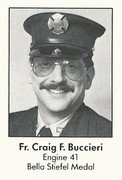
LT STEPHEN J. GERAGHTY ENG. 41 MAR. 2, 1991 AMERICAN LEGION
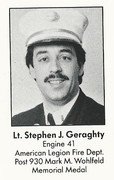
FF JOSEPH R. GANDIELLO ENG. 41 SEP. 21, 1992 BRUMMER
LT CHARLES H. SCHMIDT ENG. 41 AUG. 22, 1993 THOMPSON
LT DENIS M. MIRONCHIK ENG. 41 MAY 5, 1994 FIRE CHIEFS
FF DONALD J. REGAN ENG. 41 MAR. 23, 1994 DOLNEY
FF ROBERT J. D'ELIA ENG. 41 MAY 7, 1995 FRIEDBERG
FF MICHAEL J. SHEPHERD SQUAD 41 MARCH 22, 2012 PRENTICE
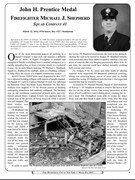
FF MICHAEL J. SHEPHERD SQUAD 41 MARCH 26, 2015 MCELLIGOTT

E 41/S 41 LODDs:
FF WILLIAM HOBUNG ENGINE 41 JANUARY 25, 1886
When returning from watch line, FF Hobung fell from the railroad bridge that crosses Cromwell Creek and drowned. His body was discovered May 19, 1886 by 2 boys fishing. He was identified by the badge on the uniform he was wearing.
FF THOMAS CULLEN III September 11, 2001 World Trade Center

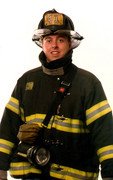
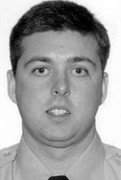
http://www.silive.com/september-11/index.ssf/2010/09/thomas_cullen_31_fdny_passiona.html
http://bravestmemorial.net/html/members/cullen_thomas_iii_fr_sq041.html
FF ROBERT HAMILTON September 11, 2001 World Trade Center
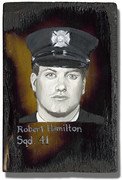
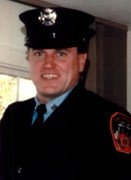
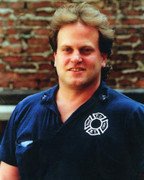
http://www.legacy.com/sept11/story.aspx?personid=97163
LT MICHAEL HEALEY September 11, 2001 World Trade Center
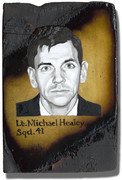
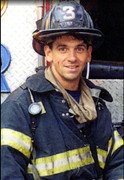
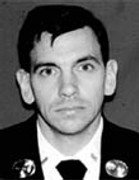
http://www.legacy.com/sept11/story.aspx?personid=147183
FF MICHAEL LYONS September 11, 2001 World Trade Center S
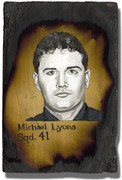
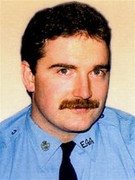
http://www.legacy.com/obituaries/lohud/obituary.aspx?n=michael-j-lyons&pid=148866288
http://www.legacy.com/sept11/story.aspx?personid=152795
FF GREGORY SIKORSKY September 11, 2001 World Trade Center
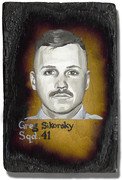
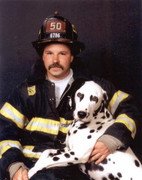
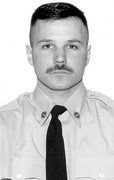
http://www.legacy.com/sept11/story.aspx?personid=110646
http://www.imao.us/archives/006171.html
http://todayremember.blogspot.com/2010/10/today-we-remember-ff-george-sikorsky.html
FF RICHARD VAN HINE September 11, 2001 World Trade Center

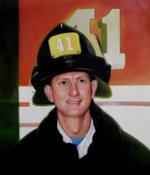
http://www.legacy.com/obituaries/vagazette/obituary.aspx?pid=146579
http://www.fdnylodd.com/9-11-Never-Forget/FDNY-Heroes/Members-of-Squad-41.html
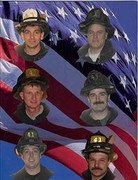
http://www.fdnylodd.com/FDNY-Heroes/Members-of-Squad-41

NYC Landmarks Preservation Commission - June 12, 2012
FIREHOUSE, ENGINE COMPANY 41 (now ENGINE COMPANY/SQUAD 41)
330 East 150th Street, Bronx
Built: 1902-03
Architect: Alexander Stevens
Landmark Site: Borough of the Bronx
On May 15, 2012, the Landmarks Preservation Commission held a public hearing on the proposed designation as a Landmark of the Firehouse, Engine Company 41 (now Engine Company/Squad 41) and the proposed designation of the related Landmark Site (Item No. 4). The hearing had been duly advertised in accordance with the provisions of law. There were two speakers in favor of designation including the representatives of the Historic District Council and the Victorian Society in America. There were no speakers in opposition. The Fire Department sent correspondence indicating their support for designation.
SUMMARY:
The Firehouse for Engine Company 41, built 1902-03, was one of the first firehouses constructed in the Bronx after the Consolidation of the City of New York in 1898. Engine Company 41 was first established as a paid, professional company in 1874, just after the annexation of the Bronx to Manhattan. Their original building was located on Third Street in the populous Mott Haven section, in the building that had previously been used by the local volunteer company. With the tremendous population growth of the period and expansion of fire services after Consolidation, Engine Company 41 moved a few blocks north to South Melrose, to a new building that was one of the many new structures erected by the city to provide more government services to these new sections of the city. This building was designed by the Superintendent of Buildings for the Fire Department, Alexander Stevens, and is one of seven firehouses for which he is credited. All of Steven?s designs were in the Renaissance Revival style, a restrained classically-inspired style appropriate to the growing city and the popular ideas of the City Beautiful movement of the early 20th century. This building exhibits an imposing facade of ashlar limestone and brick, with round arches, keystones, moldings, colonnettes and a prominent eagle to reinforce its association with the American government.
Standing out from the industrial and residential buildings on this block, this firehouse represented the government and its protective services to the many new immigrants moving into this area at the turn of the century, and continued to do so through the difficult years of the 1960s and 70s. The engine company has expanded its services to become a Squad Company, and continues to use this building today.
DESCRIPTION AND ANALYSIS
Firefighting in New York
From the earliest colonial period, the government of New York took the possibility of fire very seriously. Under Dutch rule all men were expected to participate in firefighting activities. After the English took over, the Common Council organized a force of thirty volunteer firefighters in 1737. They operated two Newsham hand pumpers that had recently been imported from London. By 1798, the Fire Department of the City of New York (FDNY), under the supervision of a chief engineer and six subordinates was officially established by an act of the state legislature.
As the city grew, this force was augmented by new volunteer companies. In spite of growing numbers of firefighters and improvements in hoses and water supplies, fire was a significant threat in an increasingly densely built up city. Of particular significance was the ?Great Fire? of December 16-17, 1835, which caused more damage to property than any other event in New York City. The damages resulting from several major fires, which occurred between 1800 and 1850, led to the establishment of a building code, and an increase in the number of firemen from 600 in 1800 to more than 4,000 in 1865. Despite rapid growth, the department was often criticized for poor performance.2 Intense competition between companies began to hinder firefighting with frequent brawls and acts of sabotage, often at the scenes of fires. During the Civil War, when fire personnel became harder to retain, public support grew for the creation of a professional firefighting force, similar to that which had been established in other cities and to the professional police force that had been created in New York in 1845.
In May 1865, the New York State Legislature established the Metropolitan Fire District, comprising the cities of New York (south of 86th Street) and Brooklyn. The act abolished the volunteer system and created the Metropolitan Fire Department, a paid professional force under the jurisdiction of the state government. By the end of the year, the city?s 124 volunteer companies with more than 4,000 men had retired or disbanded, to be replaced by 33 engine companies and 12 ladder companies operated by a force of 500 men. Immediate improvements included the use of more steam engines, horses and a somewhat reliable telegraph system. A military model was adopted for the firefighters, which involved the use of specialization, discipline, and merit. By 1870, regular service was extended to the ?suburban districts? north of 86th Street and expanded still farther north after the annexation of parts of the Bronx in 1874.
New techniques and equipment, including taller ladders and stronger steam engines, increased the department?s efficiency, as did the establishment, in 1883, of a training academy for personnel. The growth of the city during this period placed severe demands on the fire department to provide services, and in response the department undertook an ambitious building
campaign. The area served by the FDNY nearly doubled after consolidation in 1898, when the departments in Brooklyn and numerous communities in Queens and Staten Island were
incorporated into the city. After the turn of the century, the Fire Department acquired more modern apparatus and motorized vehicles, reflecting the need for faster response to fires in taller
buildings. Throughout the twentieth century, the department has endeavored to keep up with the evolving city and its firefighting needs.
FIREHOUSE DESIGN
By the early twentieth century, the firehouse as a building type had evolved from the wooden storage shed used during the seventeenth century to an imposing architectural expression
of civic character. As early as 1853, Marriott Field had argued in his City Architecture: Designs for Dwelling Houses, Stores, Hotels, etc. for symbolic architectural expression in municipal
buildings, including firehouses. The 1854 Fireman?s Hall,4 with its highly symbolic ornamentation reflected this approach, using flambeaux, hooks, ladders, and trumpets for its ornament.
Between 1880 and 1895, Napoleon LeBrun & Son served as the official architectural firm for the fire department, designing 42 firehouses in a massive effort to modernize the facilities and to accommodate the growing population of the city. Although the firm?s earliest designs were relatively simple, later buildings were more distinguished and more clearly identifiable as firehouses.
While the basic function and requirements of the firehouse were established early in its history, LeBrun is credited with standardizing the program, and introducing some minor, but important, innovations in the plan. Placing the horse stalls in the main part of the ground floor to reduce the time needed for hitching horses to the apparatus was one such innovation.6
Firehouses were usually located on mid-block sites because these were less expensive than more prominent corner sites. Since the sites were narrow, firehouses tended to be three stories tall,
with the apparatus on the ground story and rooms for the company, including dormitory, kitchen and captain?s office, above. After 1895, the department commissioned a number of well-known architects to design firehouses. Influenced by the classical revival which was highly popular throughout the country, New York firms such as Hoppin & Koen, Flagg & Chambers, and Horgan & Slatterly created facades with bold, classical style designs. After the turn of the 20th century, the Fire Department also used its own employees to design a series of buildings, all executed in a formal neo-classical style consistent with the ideas promoted by the City Beautiful movement. Government buildings were placed in neighborhoods throughout the city, with the intention of inspiring civic pride in the work of the government and the country as a whole. Buildings such as these fire houses are easily recognizable and announce themselves as distinct from private structures, using quality materials, workmanship and details to create buildings of lasting beauty and significance to their localities. Growth of The Bronx The area where Engine Company 41 is located, in the southwestern part of the Bronx, is called South Melrose. It was originally part of the extensive holdings purchased in 1670 by the Welsh-born Richard Morris (died 1672) and inherited in 1692 by his son Lewis Morris, later an Acting Governor of New York and Governor of New Jersey. Their large estate, known as ?Morrisania,? was part of Westchester County during the late eighteenth and most of the nineteenth centuries. In 1828, Jordan L. Mott, inventor of the coal-burning stove, bought a large tract of land in the southwestern part of Morrisania and established the Mott Haven Iron Works on the Harlem River at Third Avenue and 134th Street. The area around this business was developed with houses for Mott and his workers and became known as Mott Haven. The neighborhood of Melrose is located just to the north of Mott Haven. The development of this entire section was due to the expansion of the iron works and the advent of other industrial enterprises attracted by the Mott Haven Canal, which led from the Harlem River north to 138th Street. The New York & Harlem Railroad, incorporated in 1831, expanded over the Harlem River in 1840, bringing goods and people to the community.
Soon Morris began to develop the rest of his property and, in 1850, worked with surveyor Andrew Findley to lay out the villages of Woodstock, Melrose, and Melrose East and Melrose
South. By 1868 there were 488 citizens living in Melrose South, primarily Germans who came from the crowded area of Kleinedeutschland on Manhattan?s Lower East Side. Beginning in the
1860s, streets were laid out and land speculation began in earnest, aided by the railroads and streetcars that began to serve the area.In 1874, the townships of Morrisania, West Farms and Kingsbridge split from Westchester County and became the 23rd and 24th wards of the City of New York. This area of the Bronx became known as the Annexed District. Beginning in the early 1880s, booster organizations such as the North Side Association advocated for infrastructure improvements such as street paving and new sewers. The elevated railroad opened a line along Third Avenue in1888, opening the area to the process of urbanization, which increased substantially with the arrival of the subway in 1904.By 1897, just a decade after the el began operation, the once vacant blocks east of Third Avenue were almost completely built over with solid brick buildings. This area held a mixture of building types: single-family town houses built in the late 1880s; multi-story apartment houses, built with increasing frequency in the 1890s; and various industrial and manufacturing establishments along the neighborhood?s southern fringe. Encouraged by all this growth, grocery stores, restaurants, vegetable and fruit markets, tailors and hardware stores were established. By the turn of the 20th century, the commercial heart of Melrose was centered on the intersection of East 149th Street, Melrose, Willis and Third Avenues, known as the Hub. It is the oldest major shopping district in the Bronx, patronized by residents of all areas of the Bronx, and its offerings grew to include department stores, boutiques, movie palaces and vaudeville theaters.
The population of the Bronx grew rapidly. In 1890, there were 89,000 people living in the area of the Bronx known as the North Side; ten years later it had more than doubled to over
200,000. By 1915, this number had increased threefold, to 616,000. As the population and number of new buildings increased, protection from the ever present danger of fire became
increasingly important. The firehouse for Engine Company/Squad 41 was built on East 150th Street as part of the effort to protect the expanding numbers of houses and tenements in this area
of South Melrose.
FIREHOUSE ENGINE COMPANY 41
Engine Company 41 was one of the first organized as a professional company in the Bronx, just after its annexation in 1874. Its organizing date is January 1, 1874 and it was located at 501 (later renumbered as 2801) North Third Street, the former home of the volunteer Jackson Engine Company 4. This building was located within the populous neighborhood of Mott Haven. After Consolidation of the City of New York in 1898, the fire department set about creating and upgrading their facilities in the large areas now under their control. Substantial bond issues were released to enable the department to purchase many new lots for this construction. The land for a new house for Engine Company/Squad 41 was purchased as part of such a bond issue in 1902. It was located somewhat north of the original house, on East 150th Street, in the expanding Melrose section. Although many of the new buildings from this period were designed by contract with different architectural firms, the design for this house was created by the Superintendent of Buildings of the Fire Department, in order to save time and money. A New Building permit was issued in June, 1902. Construction began in February, 1903 and was completed by the following December. Construction work was performed by the firm of Fanning & Reilly and the building cost $32,800.00.
Engine Company 41 has remained at this address since that time, although various organizational changes have occurred. The company was extremely busy during the period of the 1960s and 70s when fires were started in record numbers in the South Bronx. They received a second piece of equipment to help with this heavy load and the second section was designated as
Engine Company 41-2, which continued (later as Squad Company 5) until it was disbanded in 1976. In an effort to economize, Engine Company 41 was disbanded in May 1989, but a rise in
fire fatalities in the area and protests by residents resulted in the company being reorganized and put back into service on July 1, 1990. In 1990, the Company was designated Engine Company/Squad 41, an ?enhanced engine company.? This appellation indicated increased responsibility to respond to more and higher levels of alarms and to perform squad company work outside of their regular area. Squads have more highly trained and differentiated personnel and can also respond to Haz-Mat situations.
Engine/Squad 41 is one of two squad companies now working in the Bronx. This company responded to the World Trade Center on September 11, 2001 and consequently lost six men on that day.
ALEXANDER STEVENS
Alexander Stevens graduated as a civil engineer from Columbia College in 1887. A resident of New York City, he was first employed by the Pennsylvania Railroad Company. In 1897 he was appointed as Superintendent of Buildings for the Fire Department. In this capacity he probably oversaw the renovation of existing firehouses, assembled the specifications for the commissions that the Fire Department awarded independent architects, and supervised the construction of new buildings for the department. In the Superintendent?s Report of the Fire Department Annual Report for 1902, Stevens remarks that his department is capable of designing new firehouses as well as outside architects and thus can save funds for the department. In his designs, Stevens follows the established pattern of three-story, three-bay wide firehouses with classical ornament established by Napoleon LeBrun and others who had designed many New York firehouses. Stevens is credited with designing seven firehouses in the city between 1903 and 1906 while he served in this position. The building for Hook & Ladder Company 8 stands in the Tribeca West Historic District (10 North Moore Street, 1903). Engine Company 23, 215 West 58th Street is a designated New York City Landmark. All of his designs use similar neo-Renaissance motifs such as a dominant central bay with round-arched openings embellished with colonnettes, moldings and keystones.
DESCRIPTION
Three story, three bay firehouse faced in ashlar limestone on 1st story and most of 2nd story with brick above. A stepped, granite base sits below the limestone.
Historic: Symmetrical arrangement with large central, round-arched opening for fire truck flanked by pedestrian opening and window, both with triangular pediments; ?Engine 41? over
opening; tympanum filled with shield and swags, topped by elaborate keystone and anthemion; stone frieze; colonnettes, eagle, friezes and medallions ornament 2nd story windows; stone
commemorative plaque in center bay of 2nd story; third story has three windows with continuous stone sill supported by brackets, round-arched windows with stone colonnettes, moldings and
elongated, ornamented keystones.
Alterations: Pedestrian and vehicular doors replaced; 1st story window replaced by wood with wood enframement; original iron cornice covered by sheet metal; spotlights, flagpole added.
Site: Both side facades are plain, painted brick. The firehouse sits at the lot line on East 150th Street and fills its entire lot.
FINDINGS AND DESIGNATION
On the basis of a careful consideration of the history, the architecture, and other features of this building, the Landmarks Preservation Commission finds that Firehouse, Engine Company/Squad 41 has a special character and a special historical and aesthetic interest and allure as part of the development, heritage, and cultural characteristics of New York City.
The Commission further finds that this firehouse for Engine Company/Squad 41, constructed 1902-03, was one of the first firehouses constructed in the Bronx after the Consolidation of the City of New York in 1898; that this company was one of the first organized as a professional company immediately following the annexation of the Bronx in 1874, in their first home located in Mott Haven; that after Consolidation, as the Bronx was growing rapidly, this was one of the numerous new buildings the Fire Department constructed to serve the areas newly under its jurisdiction, such as this area slightly farther north, called South Melrose; that the building for Engine Company/Squad 41 was one of seven firehouses designed by the Superintendent of Buildings for the Fire Department, Alexander Stevens; that Stephens, who oversaw the construction of numerous firehouses designed by outside architectural firms, based his designs on other firehouses being built at the time; that this building has a three-story, three-bay wide, symmetrical facade with an ashlar limestone base and brick above; that its strong, round-arched openings with moldings and keystones, its classical ornamental vocabulary such as engaged colonnettes and modillioned cornice, as well as its solid construction are typical of government buildings built during the heyday of the City Beautiful movement at the turn of the 20th century; that this building has remained in use for its original purpose and continues to serve as the home of Engine Company/Squad 41, and serves as a reminder of the period of growth and promise in the years after the consolidation of New York City.
Melrose, Bronx:
http://www.mcny.org/story/view-melrose
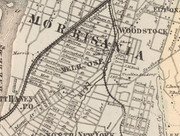
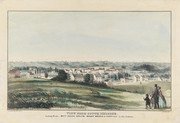
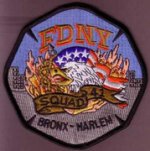
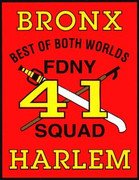
Engine 41 organized 2801 3rd Avenue former firehouse volunteer Jackson Engine 4 1874
Engine 41 new firehouse 330 E 150th Street 1904
Engine 41 disbanded 1989
Engine 41 reorganized as Enhanced Engine Company 330 E 150th Street 1990
Engine 41 became Squad 41 1998
Engine 41-2 organized 330 E 150th Street at Engine 41 1957
Engine 41-2 disbanded 1958
Engine 41-2 reorganized 330 E 150th Street at Engine 41 1968
Engine 41-2 disbanded 1974
Battalion 10 organized 2801 3rd Avenue at w/Engine 41 1874
Battalion 10 new firehouse 491 E 166 Street w/Ladder 18 1882
Squad 5 moved to 330 E 150th Street at Engine 41 1974
Squad 5 disbanded 1975
Squad 5 reorganized 330 E 150th Street at Engine 41 1975
Squad 5 disbanded 1976
Hazardous Material Technical Unit Bronx organized 330 E 150th Street at Squad 41 1998
Pre-FDNY:
The Morrisania Fire Department provided fire protection from 1856 to 1874 with 6 volunteer engine companies, 2 volunteer hose companies and 4 volunteer hook and ladder companies. Jackson Engine 4 was located at 2801 3rd Avenue. Engine 41 FDNY was organized in Jackson Engine 4's former firehouse.
1900 Bronx map: http://www.davidrumsey.com/luna/servlet/detail/RUMSEY~8~1~30317~1140838:Map-of-the-borough-of-the-Bronx---C
History of Engine 41/Squad 41:
Squad Company 41 was organized as an Engine Company on January 1, 1874. Their first firehouse, located at 2801 Third Avenue in the Bronx, was the former volunteer house of Jackson Engine Company 4. The history of Engine 41 is extensive and at one point, in 1989 the company was disbanded. On April 4, 1904, they moved into their current firehouse at 330 East 150 Street.
During the 1960?s through the 1970?s the South Bronx as well as other New York City neighborhoods were going through a conflagration. Working fires were being fought in record numbers and South Bronx fire companies were going to work in amazing proportions. In 1968, the busiest engine and ladder companies were assigned a second piece of apparatus to ?relieve? the work of the first piece.
During this time, Engine Company 41 received a second piece. This second section used the apparatus and manpower of disbanded Manhattan Engine Co. 72 (now a Bronx engine). This second section was used from 1957-1958 and again in 1968 to 1974. The company was designated as Engine Company 41-2. In 1974, the F.D.N.Y. was responding to 353,458 alarms. Working fires were at 130,324, with 52,473 structural fires. Engine Company 41?s second piece was disbanded and was reorganized to be Squad Company 5. Squad Company 5 was disbanded in 1976.
In 1981, the F.D.N.Y. began to experiment with a different color rig, lime-yellow and in 1982 Engine 41 received one of these pumpers.
On May 3, 1989, Engine Company 41 (now only one piece) was disbanded. Because the City needed to cut back on expenses, fire companies were then disbanded and Engine 41 was one of them. Engine 41 has played a vital role in the South Bronx as a fire fighting company. Due to a rise in fire fatalities in the area and protests by the residents of the area, Engine 41 was re-organized and placed back into service on July 1, 1990.
On July 1, 1990, a new chapter in the history of Engine Company 41 began. The company was reinstated but this time, Engine 41 would have a new responsibility. Engine 41 was designated Engine/ Squad 41 dubbed an ?enhanced engine company?. Engine/ Squad 41 would not only respond to they?re first, second, and third due alarm boxes, but would perform squad company work at working fires outside of those areas. They were now responding as a squad company to working fires in Bronx Battalions 3, 14, 16, 17, 18, 19, 26, and to Manhattan?s Battalions 12 and 13.
As a Squad Company, members are trained in both engine and truck work. Upon their arrival at a job, the incident commander would utilize them to his desire. The company rides with an officer and five firefighters. As an engine, the riding positions are: The engine company chauffeur (Motor Pump Operator), the Officer, Nozzle, Back-up, Door, and the Control position. The Squad Company the positions are as follows: chauffeur, Officer, Iirons, Hook, Saw, and Roof position. The Officer, Hook, and Irons are the inside team, and the Saw, Roof, and Chauffeur are the outside team.
Members of a squad company are not normally assigned. Like a Rescue Company, firefighters or officers wanting to be a member of a squad, would request an interview with the Squad Company Captain. Experience in a busy company as well as other trades e.g.: carpentry, iron or steel work, construction are very beneficial and would improve your chances of getting onto this specialized unit.
In 1998, The F.D.N.Y. made several changes. Due to the increased awareness in Hazardous Materials, six engine companies were designated as squad companies. Engines 18, 61, 252, 270, and 288 were designated squads. Squad Company 1 in Brooklyn remained Squad 1. The establishment of the squads on F.D.N.Y. Department Order 68 states 'The Squads are equipped with ladder company tools and are trained and equipped to operate as a ladder or engine company. They will continue to respond to their assigned first-alarm boxes.' Effective August 1, 1998, Squad members will be Haz-Mat Technician Units equipped with a second apparatus and equipment for responses to haz-mat incidents. On July 2, 1998 Engine/ Squad 41 was officially designated Squad Company 41. Also in 1998, Squad Company 41 received they?re new rig. They respond in a custom-built apparatus known as a rescue-pumper. The pumper has a 1000gpm capability with a 500 gallon booster tank.
With two Squad Companies now in The Bronx, Squad 41 has a new response area for working fires. Squad 41 would now respond to working fires in Bronx Battalions 3, 17, 19, 26, and in Manhattan above 90th Street on the East Side and 100th Street on the West Side covering Battalions 11, 12, 13, and 16. Squad 41 is located in Battalion 14?s district and responds to 1st, 2nd, and 3rd due boxes in these areas.
330 E 150th Street firehouse:







Engine 41:




Squad 41:




Squad 41 members:









Squad 41 videos:
https://www.youtube.com/watch?v=5EHZODejN84
https://www.youtube.com/watch?v=2C32KR1TLuQ
https://www.youtube.com/watch?v=jK1YzgKlr5M
https://www.youtube.com/watch?v=IAja5uPmH-4
Engine 41 Runs & Workers 1954-1997:
Year Engine Runs Workers OSW
1954 41 1347
1961 41 1661
1969 41 5884
41-2 5477
1971 41 6808
41-2 6692
1975 41 5148 3819
1976 41 6257 4720
1977 41 6009 4995
1978 41 5259 4327
1979 41 3210 2204
1980 41 4142 3026
1981 41 3631 2485
1982 41 3225 2193
1983 41 2916 1983 302
1984 41 3258 2076
1985 41 3343 2217 250
1986 41 3260 2178 278
1987 41 3418 2180 282
1988 41 3456 2224 250
1989 disbanded
1990 41 2009 1095 292 (6 month total only - became enhanced engine July 1)
1991 41 4152 2177 521
1992 41 4301 2393 566
1993 41 4194 2267 580
1994 41 3872 1814 469
1995 41 3449 1701 404
1996 41 3262 1881 402
1997 41 3629 1997 444
1998 became squad
Squad 41 Runs & Workers:
Year Runs Workers Emergencies OSW Fires
1998 3316 2049 235
1999 3400 1853 451
2000 3756 2435 463
2001 3637 2267 380
2002 3027 1596 376
2003 3437 1908 408
2004 3718 1958 407
2005 3906 2122 415
2006 3422 1887 413
2007 3569 2025 472
2008 3478 1793 360
2009 3567 1802 355
2010 3790 2215 335
2011 3710 1919 315
2012 3790 2215 335
2013 3499 1968 272
2014 4571 2526 270
2015 4485 3654 831
2016 4095 2069 746
Engine 41/Squad 41 FDNY Medals:
LT JAMES BYRNE ENG. 41 R-3 NOV. 26, 1939 SCOTT
FF FRANK QUILES ENG. 41 NOV. 21, 1982 THIRD ALARM
JOHN E. KEENAN ENG. 41 SEP. 24, 1990 JOHNSTON
FF CRAIG F. BUCCIERI ENG. 41 JAN. 26, 1991 STIEFEL

LT STEPHEN J. GERAGHTY ENG. 41 MAR. 2, 1991 AMERICAN LEGION

FF JOSEPH R. GANDIELLO ENG. 41 SEP. 21, 1992 BRUMMER
LT CHARLES H. SCHMIDT ENG. 41 AUG. 22, 1993 THOMPSON
LT DENIS M. MIRONCHIK ENG. 41 MAY 5, 1994 FIRE CHIEFS
FF DONALD J. REGAN ENG. 41 MAR. 23, 1994 DOLNEY
FF ROBERT J. D'ELIA ENG. 41 MAY 7, 1995 FRIEDBERG
FF MICHAEL J. SHEPHERD SQUAD 41 MARCH 22, 2012 PRENTICE

FF MICHAEL J. SHEPHERD SQUAD 41 MARCH 26, 2015 MCELLIGOTT

E 41/S 41 LODDs:
FF WILLIAM HOBUNG ENGINE 41 JANUARY 25, 1886
When returning from watch line, FF Hobung fell from the railroad bridge that crosses Cromwell Creek and drowned. His body was discovered May 19, 1886 by 2 boys fishing. He was identified by the badge on the uniform he was wearing.
FF THOMAS CULLEN III September 11, 2001 World Trade Center



http://www.silive.com/september-11/index.ssf/2010/09/thomas_cullen_31_fdny_passiona.html
http://bravestmemorial.net/html/members/cullen_thomas_iii_fr_sq041.html
FF ROBERT HAMILTON September 11, 2001 World Trade Center



http://www.legacy.com/sept11/story.aspx?personid=97163
LT MICHAEL HEALEY September 11, 2001 World Trade Center



http://www.legacy.com/sept11/story.aspx?personid=147183
FF MICHAEL LYONS September 11, 2001 World Trade Center S


http://www.legacy.com/obituaries/lohud/obituary.aspx?n=michael-j-lyons&pid=148866288
http://www.legacy.com/sept11/story.aspx?personid=152795
FF GREGORY SIKORSKY September 11, 2001 World Trade Center



http://www.legacy.com/sept11/story.aspx?personid=110646
http://www.imao.us/archives/006171.html
http://todayremember.blogspot.com/2010/10/today-we-remember-ff-george-sikorsky.html
FF RICHARD VAN HINE September 11, 2001 World Trade Center


http://www.legacy.com/obituaries/vagazette/obituary.aspx?pid=146579
http://www.fdnylodd.com/9-11-Never-Forget/FDNY-Heroes/Members-of-Squad-41.html

http://www.fdnylodd.com/FDNY-Heroes/Members-of-Squad-41

NYC Landmarks Preservation Commission - June 12, 2012
FIREHOUSE, ENGINE COMPANY 41 (now ENGINE COMPANY/SQUAD 41)
330 East 150th Street, Bronx
Built: 1902-03
Architect: Alexander Stevens
Landmark Site: Borough of the Bronx
On May 15, 2012, the Landmarks Preservation Commission held a public hearing on the proposed designation as a Landmark of the Firehouse, Engine Company 41 (now Engine Company/Squad 41) and the proposed designation of the related Landmark Site (Item No. 4). The hearing had been duly advertised in accordance with the provisions of law. There were two speakers in favor of designation including the representatives of the Historic District Council and the Victorian Society in America. There were no speakers in opposition. The Fire Department sent correspondence indicating their support for designation.
SUMMARY:
The Firehouse for Engine Company 41, built 1902-03, was one of the first firehouses constructed in the Bronx after the Consolidation of the City of New York in 1898. Engine Company 41 was first established as a paid, professional company in 1874, just after the annexation of the Bronx to Manhattan. Their original building was located on Third Street in the populous Mott Haven section, in the building that had previously been used by the local volunteer company. With the tremendous population growth of the period and expansion of fire services after Consolidation, Engine Company 41 moved a few blocks north to South Melrose, to a new building that was one of the many new structures erected by the city to provide more government services to these new sections of the city. This building was designed by the Superintendent of Buildings for the Fire Department, Alexander Stevens, and is one of seven firehouses for which he is credited. All of Steven?s designs were in the Renaissance Revival style, a restrained classically-inspired style appropriate to the growing city and the popular ideas of the City Beautiful movement of the early 20th century. This building exhibits an imposing facade of ashlar limestone and brick, with round arches, keystones, moldings, colonnettes and a prominent eagle to reinforce its association with the American government.
Standing out from the industrial and residential buildings on this block, this firehouse represented the government and its protective services to the many new immigrants moving into this area at the turn of the century, and continued to do so through the difficult years of the 1960s and 70s. The engine company has expanded its services to become a Squad Company, and continues to use this building today.
DESCRIPTION AND ANALYSIS
Firefighting in New York
From the earliest colonial period, the government of New York took the possibility of fire very seriously. Under Dutch rule all men were expected to participate in firefighting activities. After the English took over, the Common Council organized a force of thirty volunteer firefighters in 1737. They operated two Newsham hand pumpers that had recently been imported from London. By 1798, the Fire Department of the City of New York (FDNY), under the supervision of a chief engineer and six subordinates was officially established by an act of the state legislature.
As the city grew, this force was augmented by new volunteer companies. In spite of growing numbers of firefighters and improvements in hoses and water supplies, fire was a significant threat in an increasingly densely built up city. Of particular significance was the ?Great Fire? of December 16-17, 1835, which caused more damage to property than any other event in New York City. The damages resulting from several major fires, which occurred between 1800 and 1850, led to the establishment of a building code, and an increase in the number of firemen from 600 in 1800 to more than 4,000 in 1865. Despite rapid growth, the department was often criticized for poor performance.2 Intense competition between companies began to hinder firefighting with frequent brawls and acts of sabotage, often at the scenes of fires. During the Civil War, when fire personnel became harder to retain, public support grew for the creation of a professional firefighting force, similar to that which had been established in other cities and to the professional police force that had been created in New York in 1845.
In May 1865, the New York State Legislature established the Metropolitan Fire District, comprising the cities of New York (south of 86th Street) and Brooklyn. The act abolished the volunteer system and created the Metropolitan Fire Department, a paid professional force under the jurisdiction of the state government. By the end of the year, the city?s 124 volunteer companies with more than 4,000 men had retired or disbanded, to be replaced by 33 engine companies and 12 ladder companies operated by a force of 500 men. Immediate improvements included the use of more steam engines, horses and a somewhat reliable telegraph system. A military model was adopted for the firefighters, which involved the use of specialization, discipline, and merit. By 1870, regular service was extended to the ?suburban districts? north of 86th Street and expanded still farther north after the annexation of parts of the Bronx in 1874.
New techniques and equipment, including taller ladders and stronger steam engines, increased the department?s efficiency, as did the establishment, in 1883, of a training academy for personnel. The growth of the city during this period placed severe demands on the fire department to provide services, and in response the department undertook an ambitious building
campaign. The area served by the FDNY nearly doubled after consolidation in 1898, when the departments in Brooklyn and numerous communities in Queens and Staten Island were
incorporated into the city. After the turn of the century, the Fire Department acquired more modern apparatus and motorized vehicles, reflecting the need for faster response to fires in taller
buildings. Throughout the twentieth century, the department has endeavored to keep up with the evolving city and its firefighting needs.
FIREHOUSE DESIGN
By the early twentieth century, the firehouse as a building type had evolved from the wooden storage shed used during the seventeenth century to an imposing architectural expression
of civic character. As early as 1853, Marriott Field had argued in his City Architecture: Designs for Dwelling Houses, Stores, Hotels, etc. for symbolic architectural expression in municipal
buildings, including firehouses. The 1854 Fireman?s Hall,4 with its highly symbolic ornamentation reflected this approach, using flambeaux, hooks, ladders, and trumpets for its ornament.
Between 1880 and 1895, Napoleon LeBrun & Son served as the official architectural firm for the fire department, designing 42 firehouses in a massive effort to modernize the facilities and to accommodate the growing population of the city. Although the firm?s earliest designs were relatively simple, later buildings were more distinguished and more clearly identifiable as firehouses.
While the basic function and requirements of the firehouse were established early in its history, LeBrun is credited with standardizing the program, and introducing some minor, but important, innovations in the plan. Placing the horse stalls in the main part of the ground floor to reduce the time needed for hitching horses to the apparatus was one such innovation.6
Firehouses were usually located on mid-block sites because these were less expensive than more prominent corner sites. Since the sites were narrow, firehouses tended to be three stories tall,
with the apparatus on the ground story and rooms for the company, including dormitory, kitchen and captain?s office, above. After 1895, the department commissioned a number of well-known architects to design firehouses. Influenced by the classical revival which was highly popular throughout the country, New York firms such as Hoppin & Koen, Flagg & Chambers, and Horgan & Slatterly created facades with bold, classical style designs. After the turn of the 20th century, the Fire Department also used its own employees to design a series of buildings, all executed in a formal neo-classical style consistent with the ideas promoted by the City Beautiful movement. Government buildings were placed in neighborhoods throughout the city, with the intention of inspiring civic pride in the work of the government and the country as a whole. Buildings such as these fire houses are easily recognizable and announce themselves as distinct from private structures, using quality materials, workmanship and details to create buildings of lasting beauty and significance to their localities. Growth of The Bronx The area where Engine Company 41 is located, in the southwestern part of the Bronx, is called South Melrose. It was originally part of the extensive holdings purchased in 1670 by the Welsh-born Richard Morris (died 1672) and inherited in 1692 by his son Lewis Morris, later an Acting Governor of New York and Governor of New Jersey. Their large estate, known as ?Morrisania,? was part of Westchester County during the late eighteenth and most of the nineteenth centuries. In 1828, Jordan L. Mott, inventor of the coal-burning stove, bought a large tract of land in the southwestern part of Morrisania and established the Mott Haven Iron Works on the Harlem River at Third Avenue and 134th Street. The area around this business was developed with houses for Mott and his workers and became known as Mott Haven. The neighborhood of Melrose is located just to the north of Mott Haven. The development of this entire section was due to the expansion of the iron works and the advent of other industrial enterprises attracted by the Mott Haven Canal, which led from the Harlem River north to 138th Street. The New York & Harlem Railroad, incorporated in 1831, expanded over the Harlem River in 1840, bringing goods and people to the community.
Soon Morris began to develop the rest of his property and, in 1850, worked with surveyor Andrew Findley to lay out the villages of Woodstock, Melrose, and Melrose East and Melrose
South. By 1868 there were 488 citizens living in Melrose South, primarily Germans who came from the crowded area of Kleinedeutschland on Manhattan?s Lower East Side. Beginning in the
1860s, streets were laid out and land speculation began in earnest, aided by the railroads and streetcars that began to serve the area.In 1874, the townships of Morrisania, West Farms and Kingsbridge split from Westchester County and became the 23rd and 24th wards of the City of New York. This area of the Bronx became known as the Annexed District. Beginning in the early 1880s, booster organizations such as the North Side Association advocated for infrastructure improvements such as street paving and new sewers. The elevated railroad opened a line along Third Avenue in1888, opening the area to the process of urbanization, which increased substantially with the arrival of the subway in 1904.By 1897, just a decade after the el began operation, the once vacant blocks east of Third Avenue were almost completely built over with solid brick buildings. This area held a mixture of building types: single-family town houses built in the late 1880s; multi-story apartment houses, built with increasing frequency in the 1890s; and various industrial and manufacturing establishments along the neighborhood?s southern fringe. Encouraged by all this growth, grocery stores, restaurants, vegetable and fruit markets, tailors and hardware stores were established. By the turn of the 20th century, the commercial heart of Melrose was centered on the intersection of East 149th Street, Melrose, Willis and Third Avenues, known as the Hub. It is the oldest major shopping district in the Bronx, patronized by residents of all areas of the Bronx, and its offerings grew to include department stores, boutiques, movie palaces and vaudeville theaters.
The population of the Bronx grew rapidly. In 1890, there were 89,000 people living in the area of the Bronx known as the North Side; ten years later it had more than doubled to over
200,000. By 1915, this number had increased threefold, to 616,000. As the population and number of new buildings increased, protection from the ever present danger of fire became
increasingly important. The firehouse for Engine Company/Squad 41 was built on East 150th Street as part of the effort to protect the expanding numbers of houses and tenements in this area
of South Melrose.
FIREHOUSE ENGINE COMPANY 41
Engine Company 41 was one of the first organized as a professional company in the Bronx, just after its annexation in 1874. Its organizing date is January 1, 1874 and it was located at 501 (later renumbered as 2801) North Third Street, the former home of the volunteer Jackson Engine Company 4. This building was located within the populous neighborhood of Mott Haven. After Consolidation of the City of New York in 1898, the fire department set about creating and upgrading their facilities in the large areas now under their control. Substantial bond issues were released to enable the department to purchase many new lots for this construction. The land for a new house for Engine Company/Squad 41 was purchased as part of such a bond issue in 1902. It was located somewhat north of the original house, on East 150th Street, in the expanding Melrose section. Although many of the new buildings from this period were designed by contract with different architectural firms, the design for this house was created by the Superintendent of Buildings of the Fire Department, in order to save time and money. A New Building permit was issued in June, 1902. Construction began in February, 1903 and was completed by the following December. Construction work was performed by the firm of Fanning & Reilly and the building cost $32,800.00.
Engine Company 41 has remained at this address since that time, although various organizational changes have occurred. The company was extremely busy during the period of the 1960s and 70s when fires were started in record numbers in the South Bronx. They received a second piece of equipment to help with this heavy load and the second section was designated as
Engine Company 41-2, which continued (later as Squad Company 5) until it was disbanded in 1976. In an effort to economize, Engine Company 41 was disbanded in May 1989, but a rise in
fire fatalities in the area and protests by residents resulted in the company being reorganized and put back into service on July 1, 1990. In 1990, the Company was designated Engine Company/Squad 41, an ?enhanced engine company.? This appellation indicated increased responsibility to respond to more and higher levels of alarms and to perform squad company work outside of their regular area. Squads have more highly trained and differentiated personnel and can also respond to Haz-Mat situations.
Engine/Squad 41 is one of two squad companies now working in the Bronx. This company responded to the World Trade Center on September 11, 2001 and consequently lost six men on that day.
ALEXANDER STEVENS
Alexander Stevens graduated as a civil engineer from Columbia College in 1887. A resident of New York City, he was first employed by the Pennsylvania Railroad Company. In 1897 he was appointed as Superintendent of Buildings for the Fire Department. In this capacity he probably oversaw the renovation of existing firehouses, assembled the specifications for the commissions that the Fire Department awarded independent architects, and supervised the construction of new buildings for the department. In the Superintendent?s Report of the Fire Department Annual Report for 1902, Stevens remarks that his department is capable of designing new firehouses as well as outside architects and thus can save funds for the department. In his designs, Stevens follows the established pattern of three-story, three-bay wide firehouses with classical ornament established by Napoleon LeBrun and others who had designed many New York firehouses. Stevens is credited with designing seven firehouses in the city between 1903 and 1906 while he served in this position. The building for Hook & Ladder Company 8 stands in the Tribeca West Historic District (10 North Moore Street, 1903). Engine Company 23, 215 West 58th Street is a designated New York City Landmark. All of his designs use similar neo-Renaissance motifs such as a dominant central bay with round-arched openings embellished with colonnettes, moldings and keystones.
DESCRIPTION
Three story, three bay firehouse faced in ashlar limestone on 1st story and most of 2nd story with brick above. A stepped, granite base sits below the limestone.
Historic: Symmetrical arrangement with large central, round-arched opening for fire truck flanked by pedestrian opening and window, both with triangular pediments; ?Engine 41? over
opening; tympanum filled with shield and swags, topped by elaborate keystone and anthemion; stone frieze; colonnettes, eagle, friezes and medallions ornament 2nd story windows; stone
commemorative plaque in center bay of 2nd story; third story has three windows with continuous stone sill supported by brackets, round-arched windows with stone colonnettes, moldings and
elongated, ornamented keystones.
Alterations: Pedestrian and vehicular doors replaced; 1st story window replaced by wood with wood enframement; original iron cornice covered by sheet metal; spotlights, flagpole added.
Site: Both side facades are plain, painted brick. The firehouse sits at the lot line on East 150th Street and fills its entire lot.
FINDINGS AND DESIGNATION
On the basis of a careful consideration of the history, the architecture, and other features of this building, the Landmarks Preservation Commission finds that Firehouse, Engine Company/Squad 41 has a special character and a special historical and aesthetic interest and allure as part of the development, heritage, and cultural characteristics of New York City.
The Commission further finds that this firehouse for Engine Company/Squad 41, constructed 1902-03, was one of the first firehouses constructed in the Bronx after the Consolidation of the City of New York in 1898; that this company was one of the first organized as a professional company immediately following the annexation of the Bronx in 1874, in their first home located in Mott Haven; that after Consolidation, as the Bronx was growing rapidly, this was one of the numerous new buildings the Fire Department constructed to serve the areas newly under its jurisdiction, such as this area slightly farther north, called South Melrose; that the building for Engine Company/Squad 41 was one of seven firehouses designed by the Superintendent of Buildings for the Fire Department, Alexander Stevens; that Stephens, who oversaw the construction of numerous firehouses designed by outside architectural firms, based his designs on other firehouses being built at the time; that this building has a three-story, three-bay wide, symmetrical facade with an ashlar limestone base and brick above; that its strong, round-arched openings with moldings and keystones, its classical ornamental vocabulary such as engaged colonnettes and modillioned cornice, as well as its solid construction are typical of government buildings built during the heyday of the City Beautiful movement at the turn of the 20th century; that this building has remained in use for its original purpose and continues to serve as the home of Engine Company/Squad 41, and serves as a reminder of the period of growth and promise in the years after the consolidation of New York City.
Melrose, Bronx:
http://www.mcny.org/story/view-melrose




- Joined
- Mar 8, 2007
- Messages
- 5,392
Engine 41's original 2 story wood frame firehouse at 2801 Third Ave. just south of 148th St. still stands today as a small store that sells African items.
mac8146 said:Not sure of when This happened thinking late 80?s early 90?s but TL29 switched rigs with L50 who had a rearmount. Maybe other members can be more specific as to reasons, also remember that TL50 had received a 95? tower and swapped that rig with TL51 due to turning radius out of quarters being tight so they became a 75? tower again.
TL 50 95 ft tower:
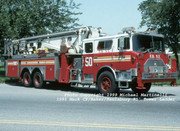
TL 50 75 ft tower - former L 50:
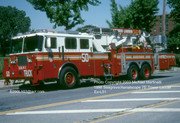
- Joined
- Mar 8, 2007
- Messages
- 5,392
Hey Mack, correct the box number to 2343mack said:
Hey Mack, box number was 2343 @Third Ave. & 161st for 2nd alarmer at B & L Auto Parts, 3217 3rd Ave. & 162nd St.


